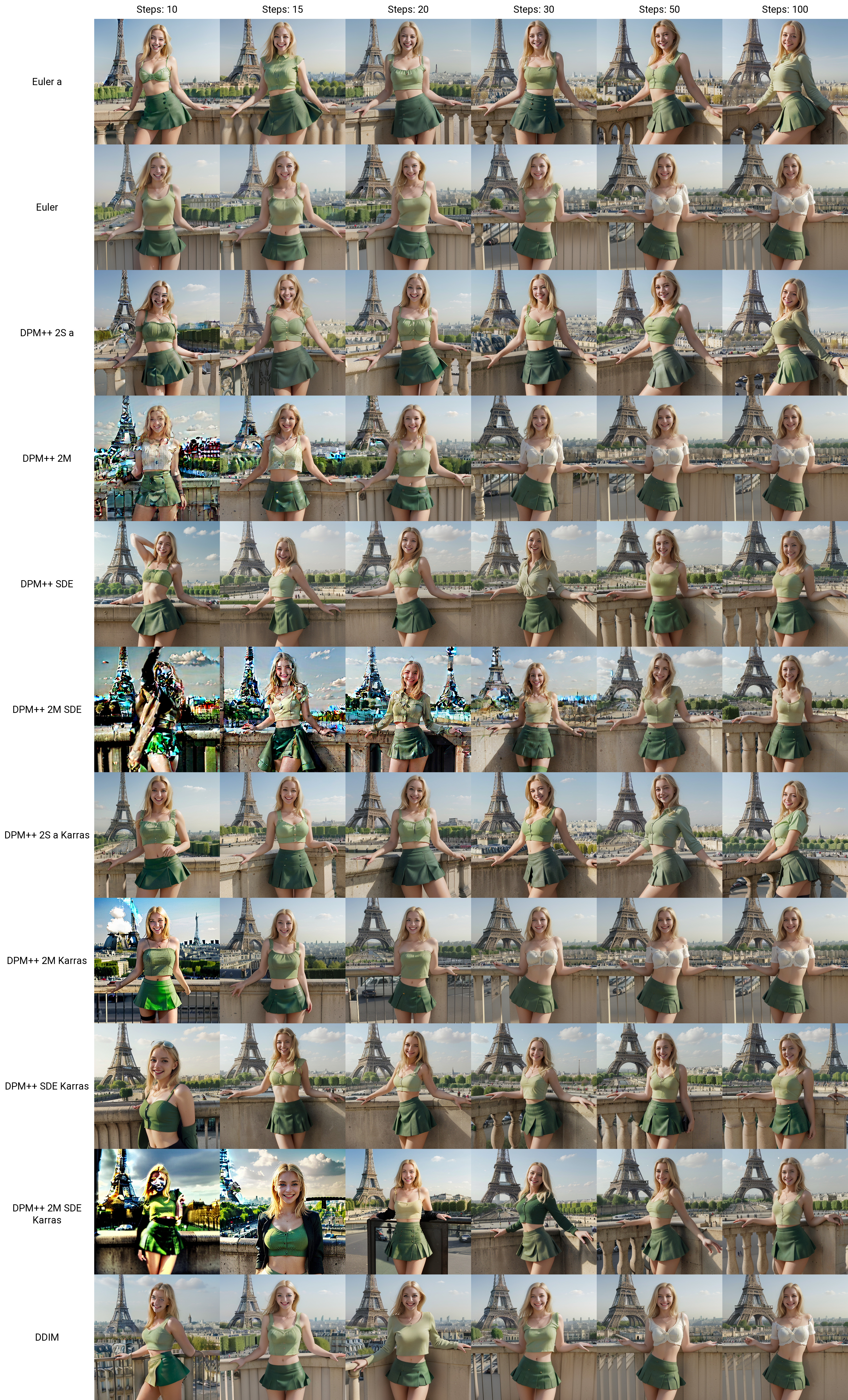I ran the same prompt using many samplers at different steps counts to evaluate which one(s) give a decent quality at a low step count. I have not used the “restore faces” option.
Here are my observations related to image quality (artifacts) and convergence.
Quality at lower steps
At 10 steps, a few samplers are unusable: DPM++ 2M and its variants, DDIM.
At 15 steps, all samplers are OK except DPM++ 2M SDE and its Karras variant are unusable.
Starting at 20 steps, all samplers exhibit good quality except DPM++ 2M SDE.
DPM++ 2M SDE still has artifacts at 50 steps and some things are wonky even at 100 steps.
Conclusion:
- for fast iteration (10 steps), use any sampler except DPM++ 2M (including variants) and DDIM.
- do not use DPM++ 2M SDE
Similarities
Euler, DPM++ 2M, DPM++ 2M Karras and DDIM give identical composition.
I think Euler gives better face quality but worse hand quality, but that’s completely subjective.
Convergence (stability)
Samplers are said to “converge” when the output composition stays almost the same when the step count increases. Using a converging sampler may help you to find a composition you like since it will not change much if you increase the steps later.
The following models converge: Euler, DPM++ 2M, DPM++ 2M Karras, DDIM. The pose of the girl changes quite a lot between 20 and 50, sometimes even at 30.
The following models not converge: all the ancestral variants (“a”), all the SDE variants.
